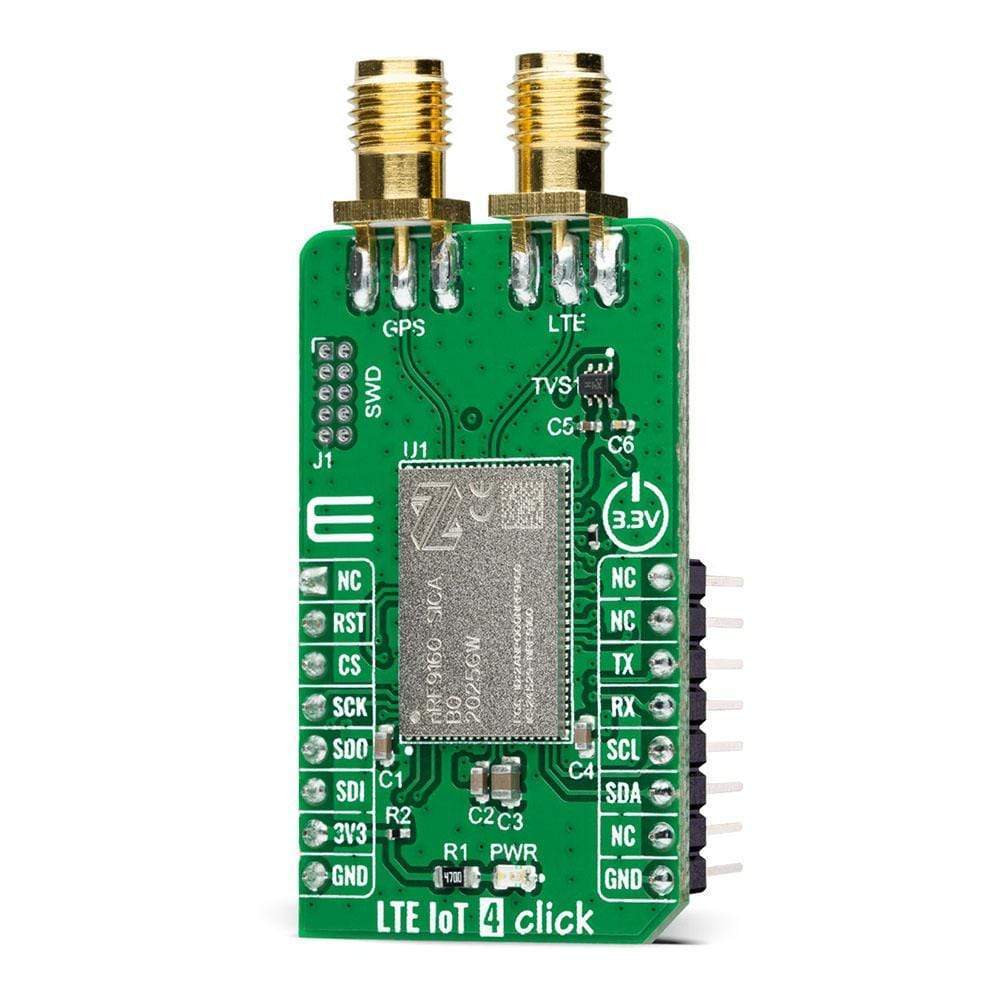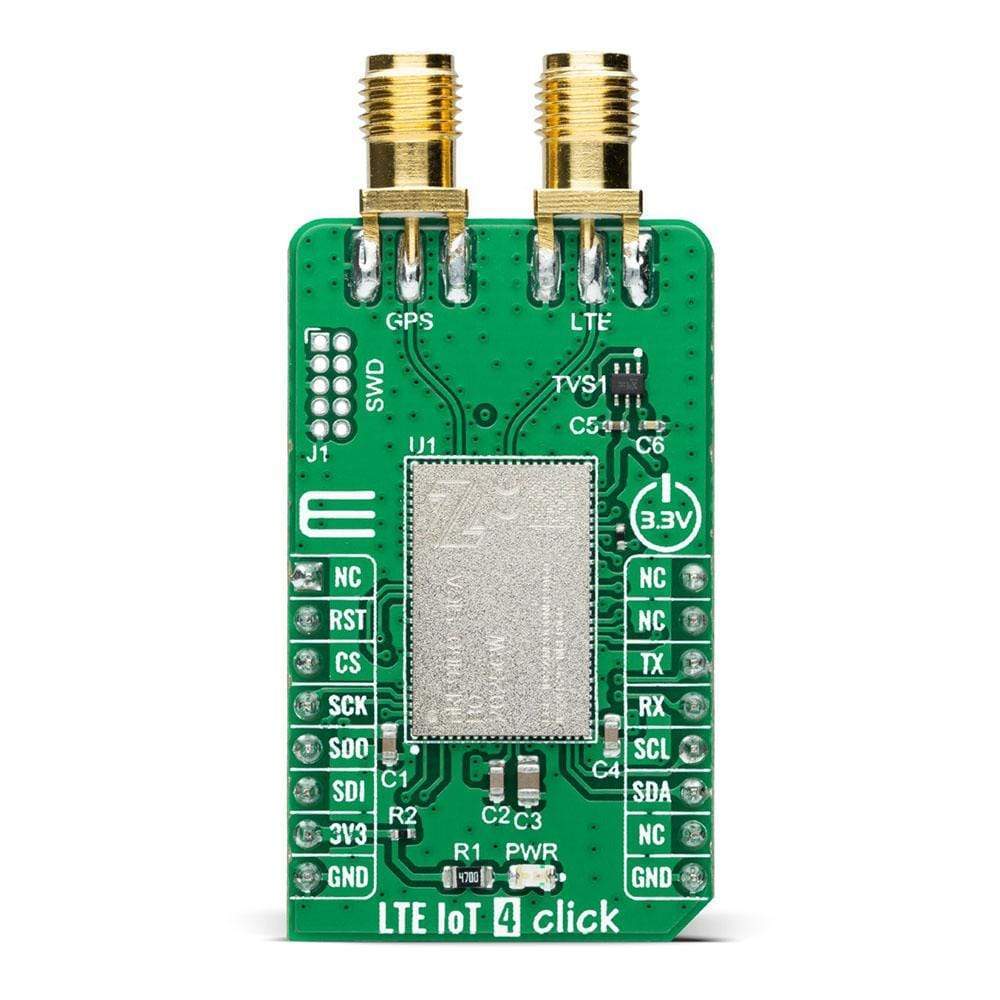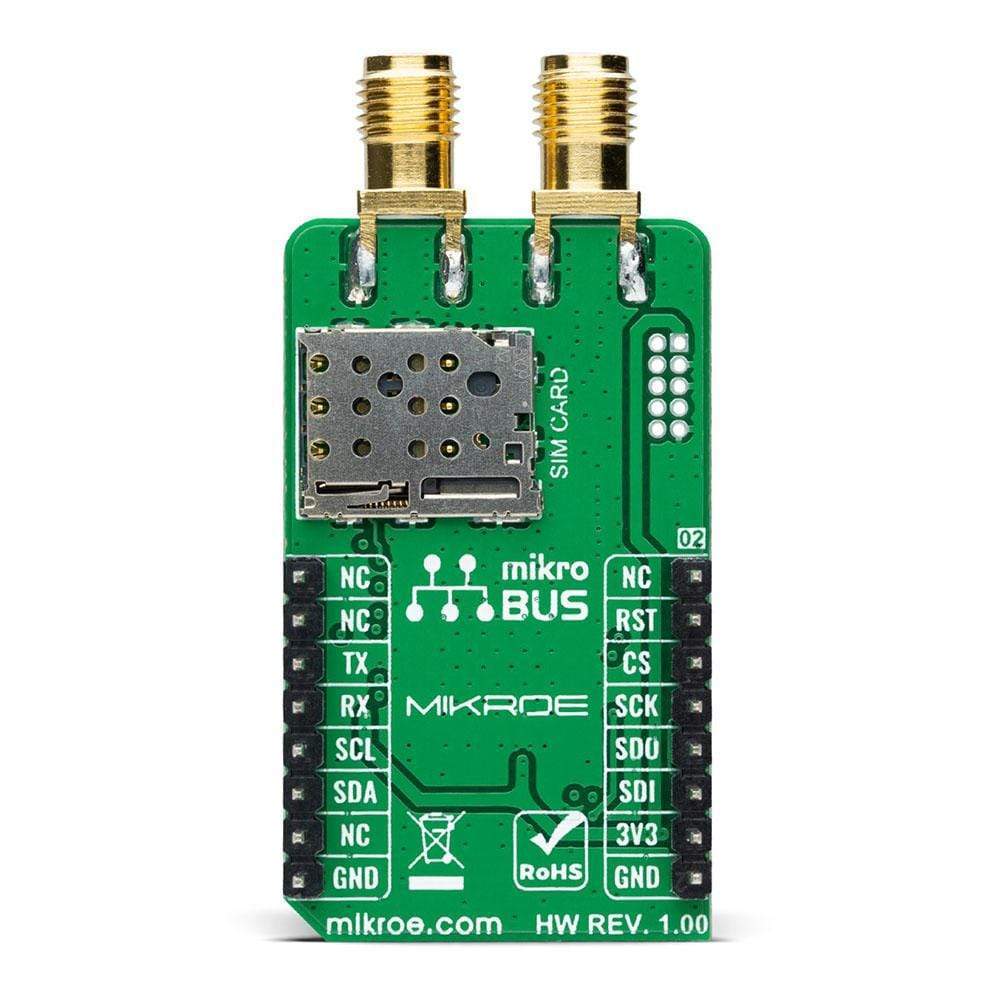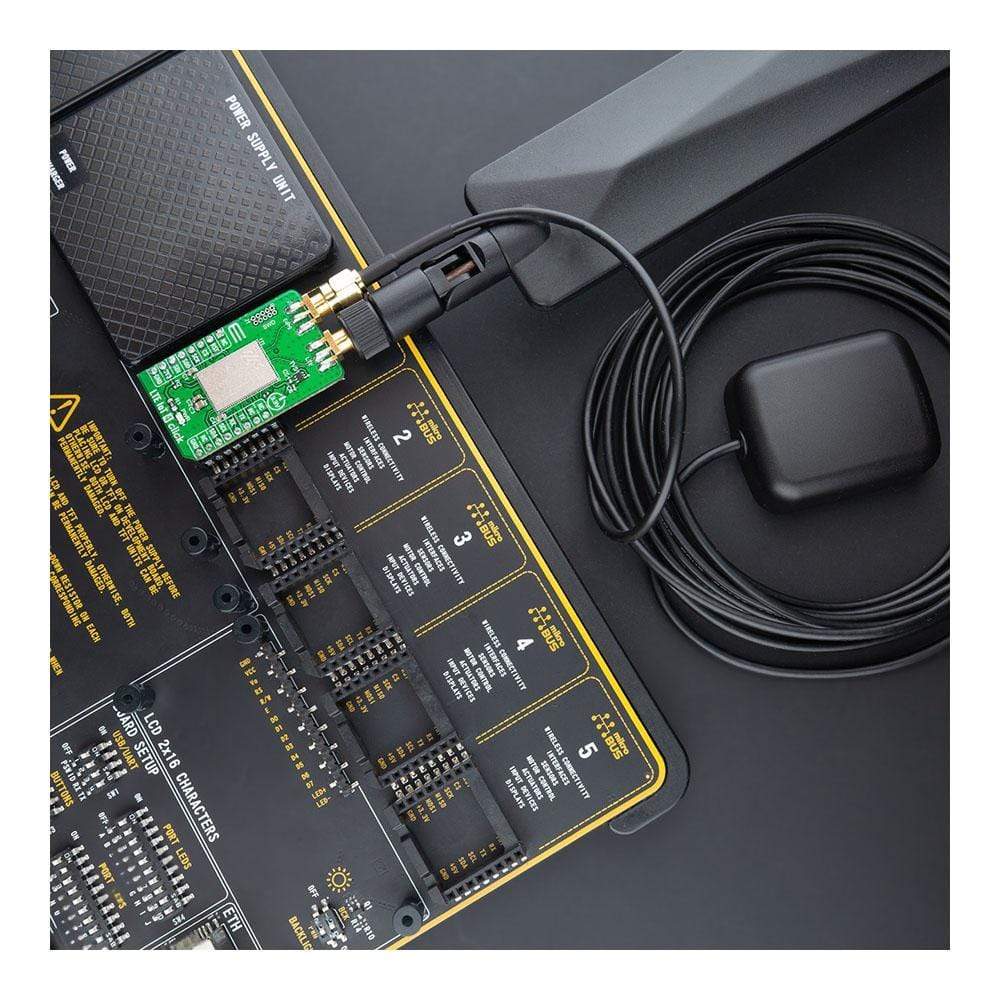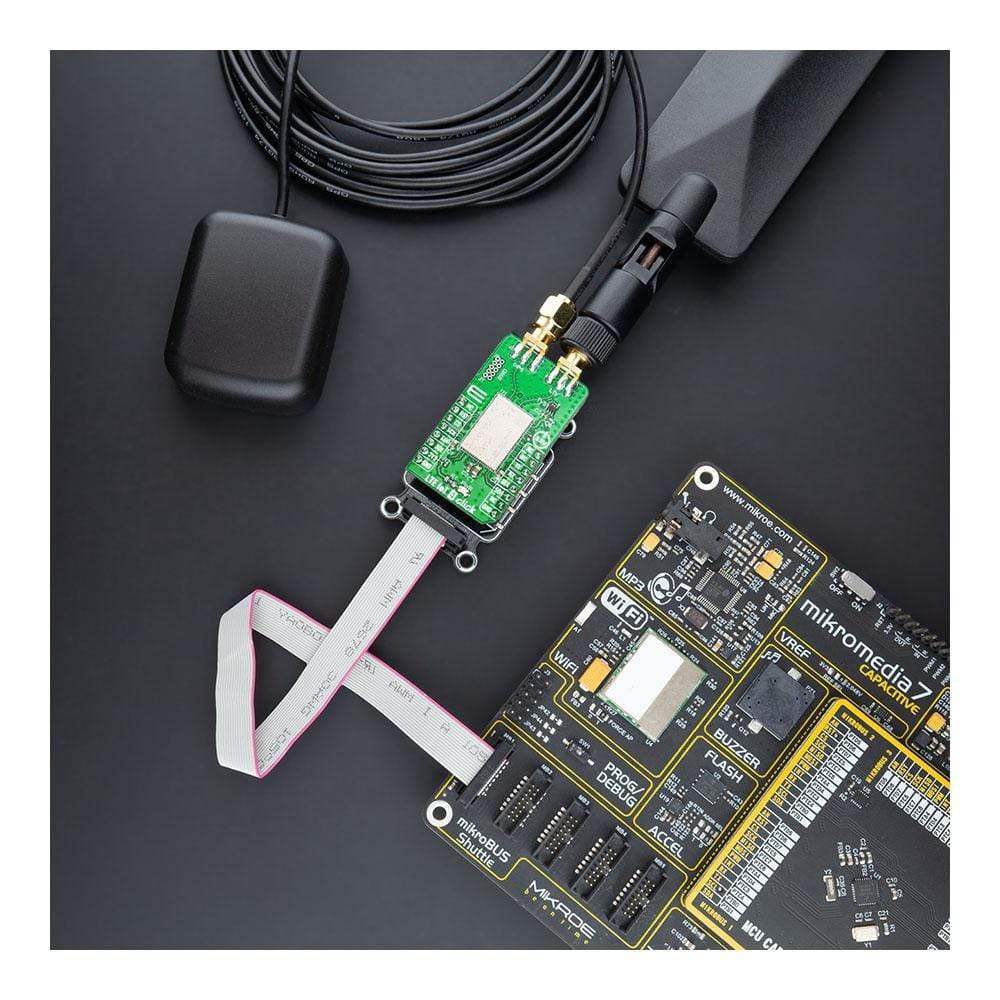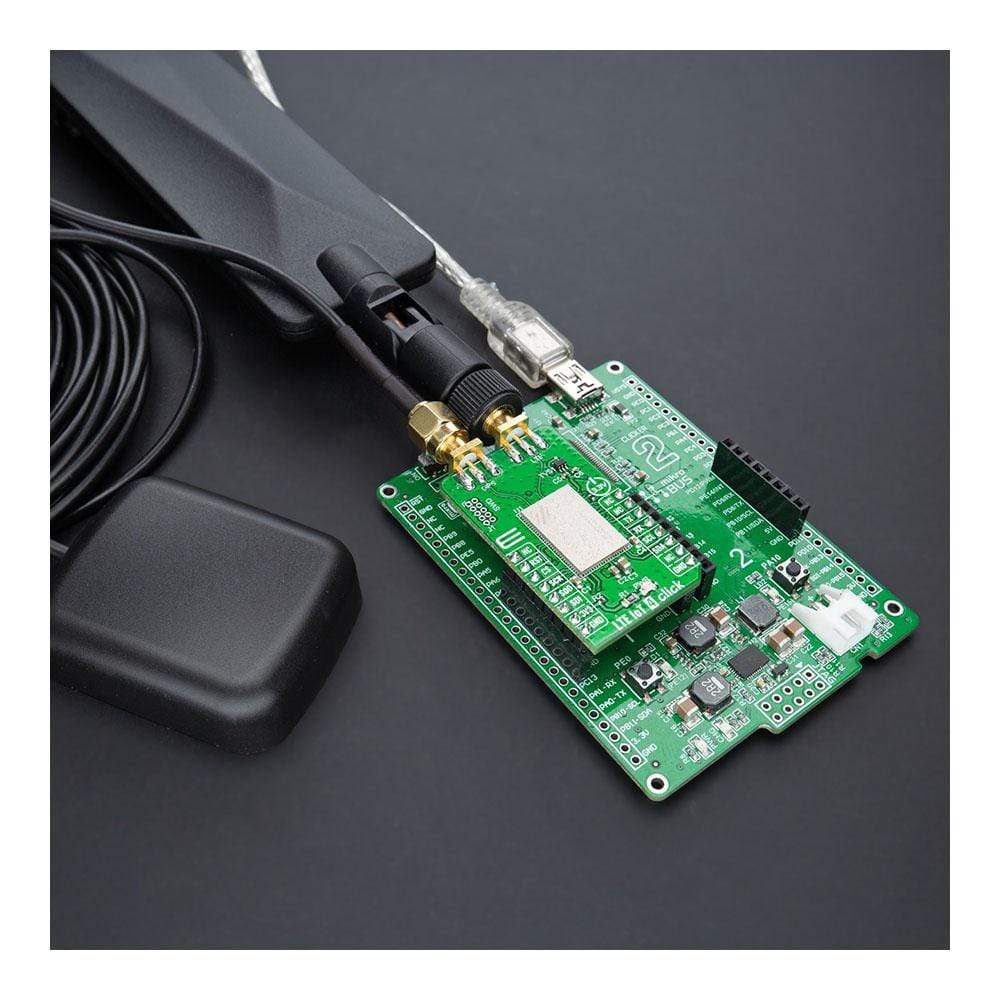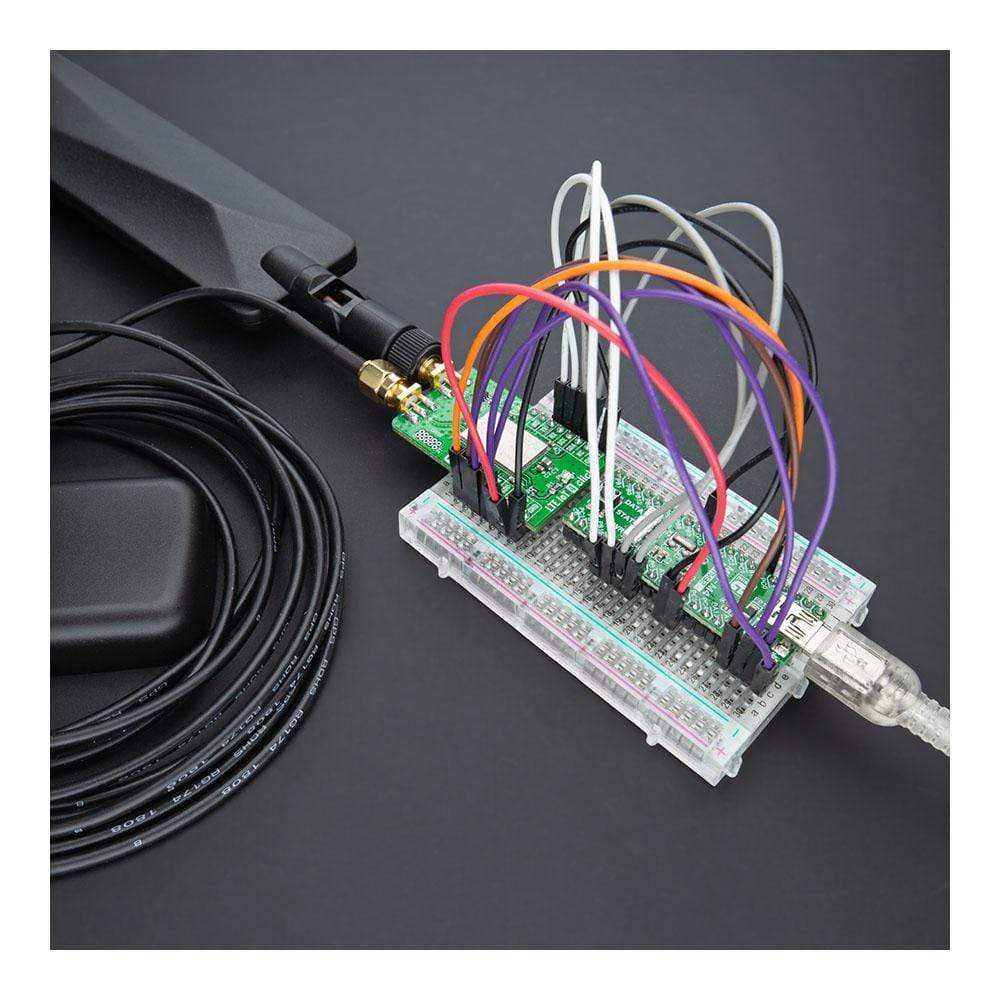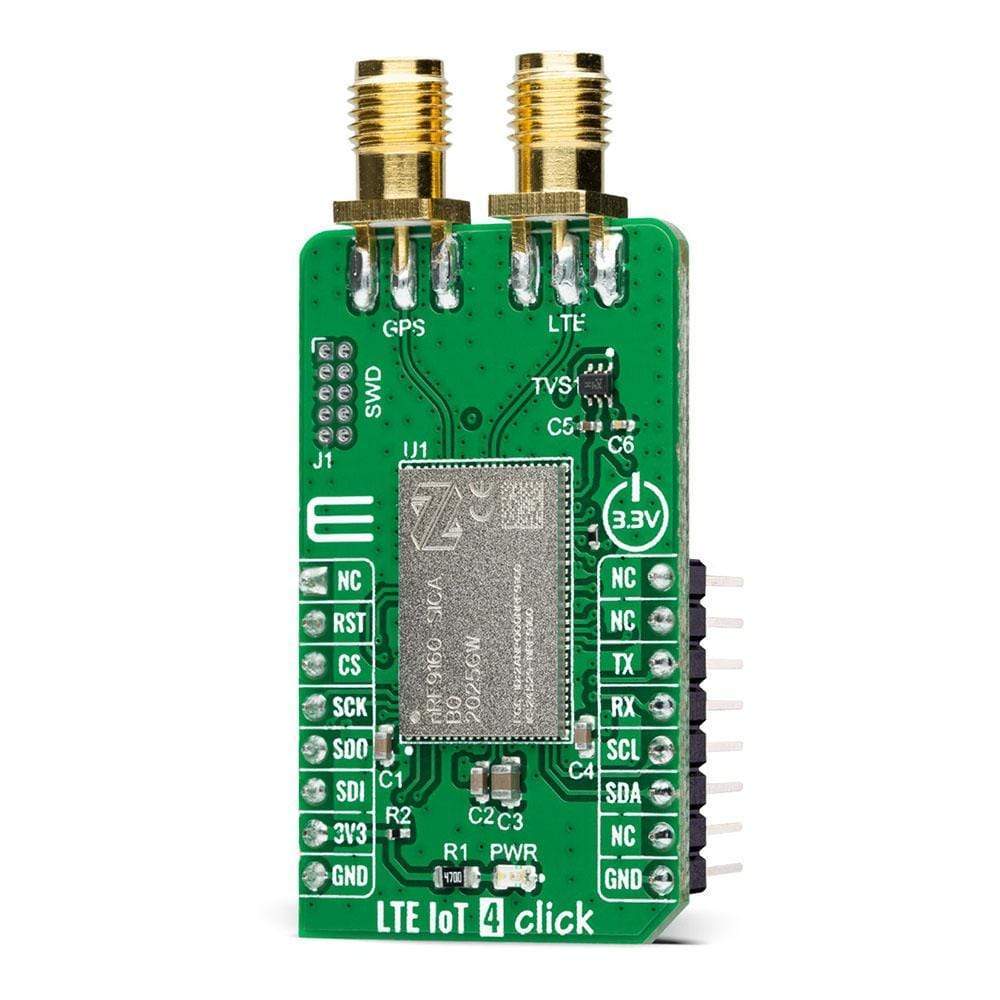
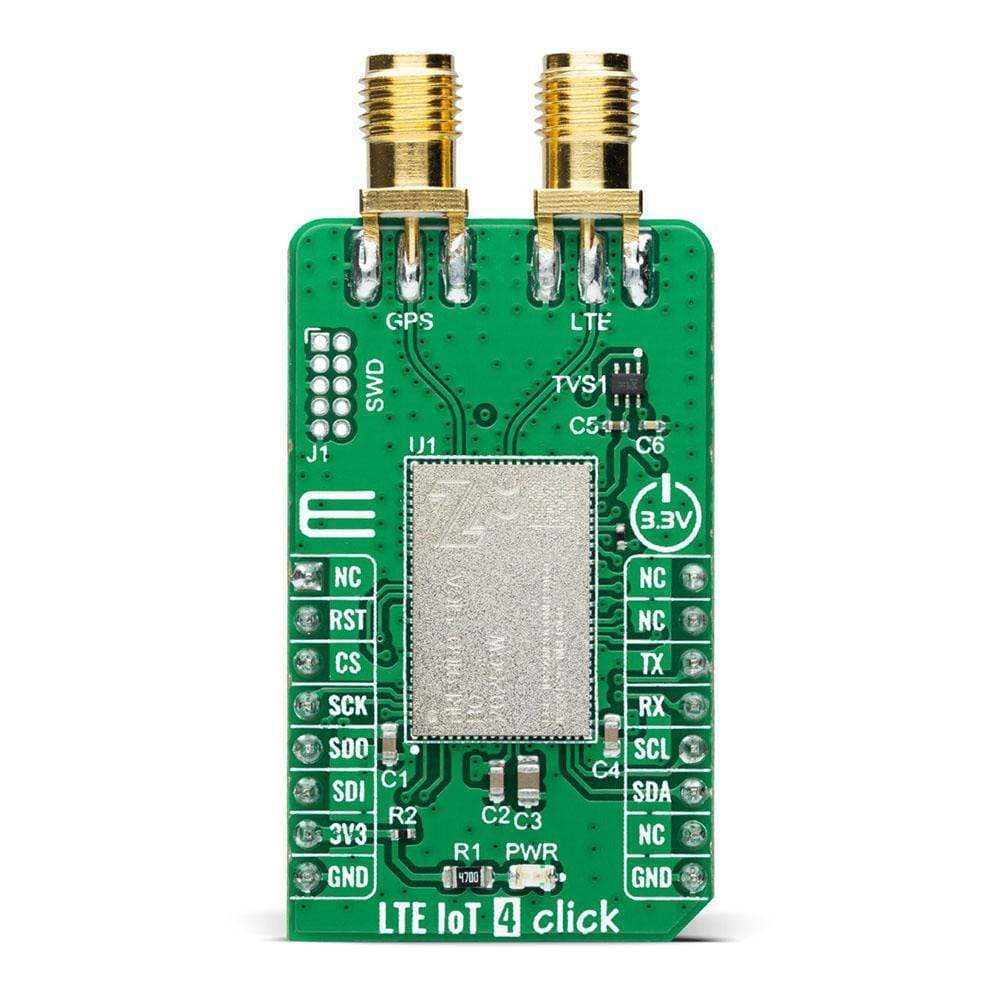
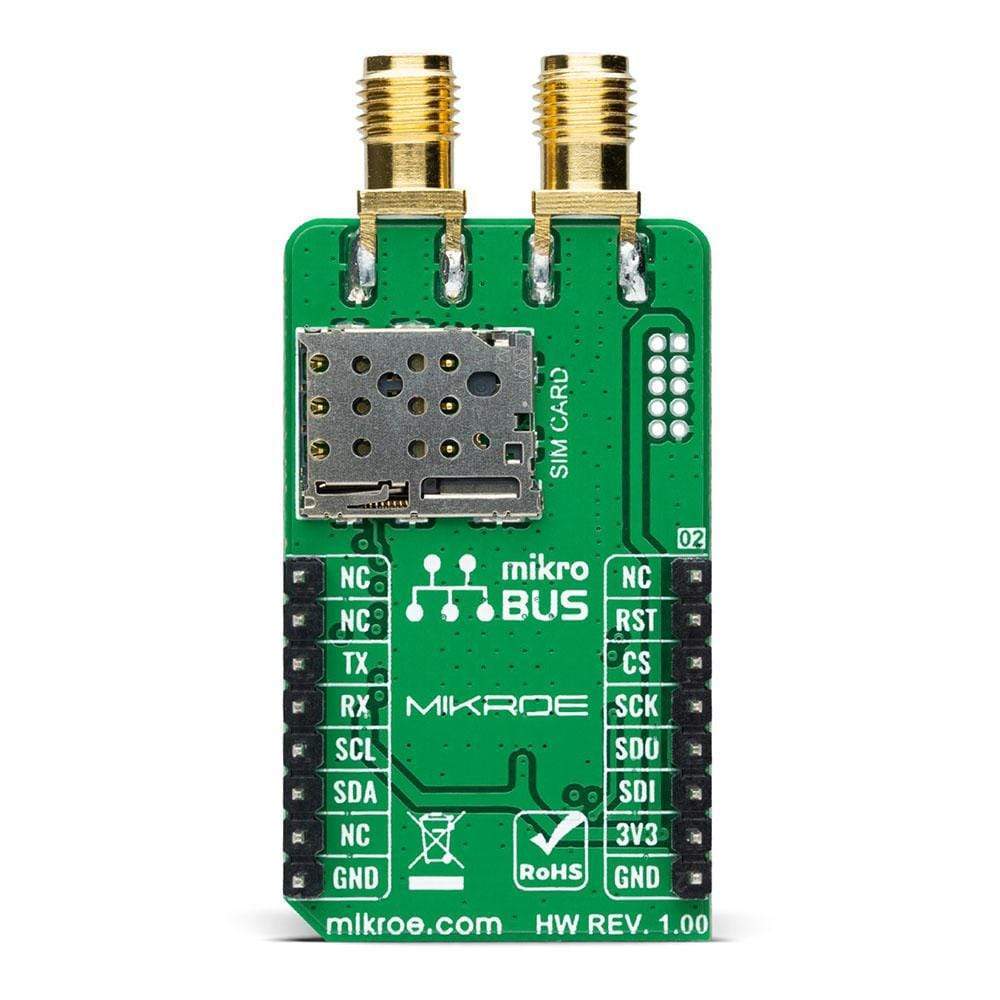
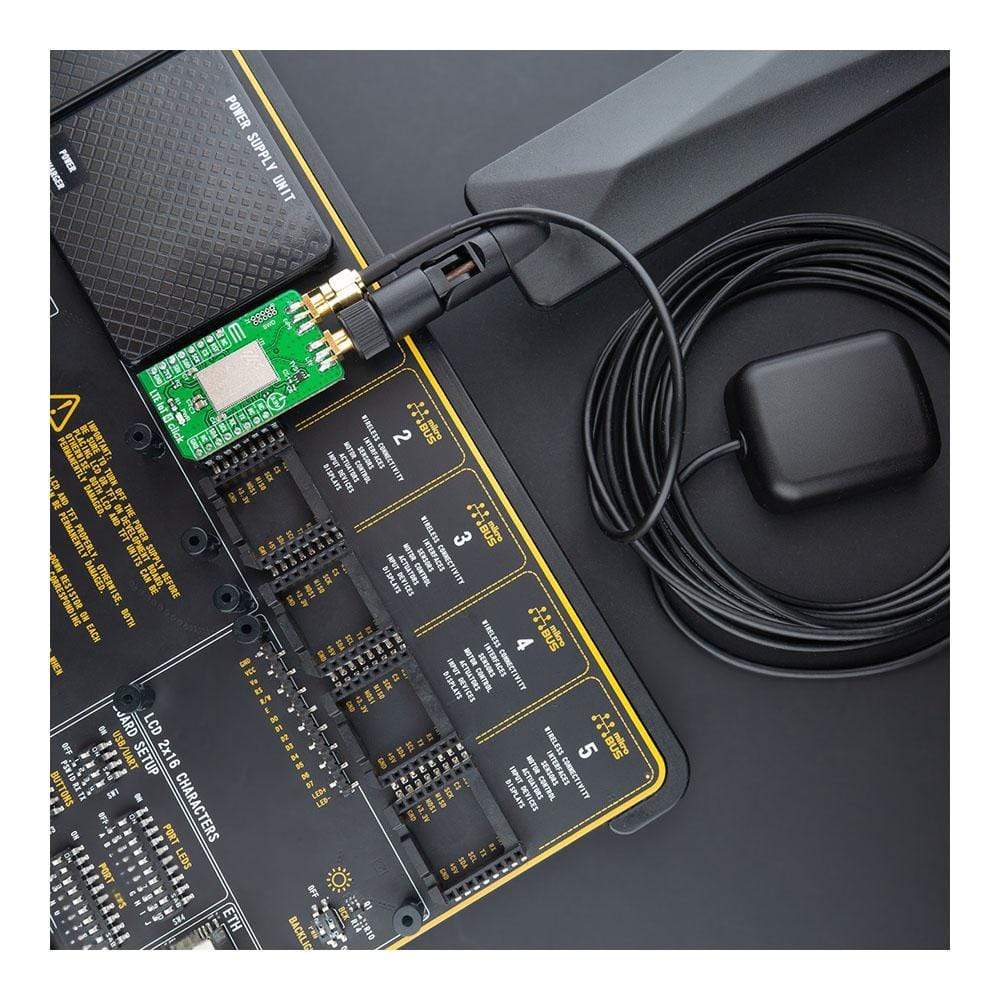
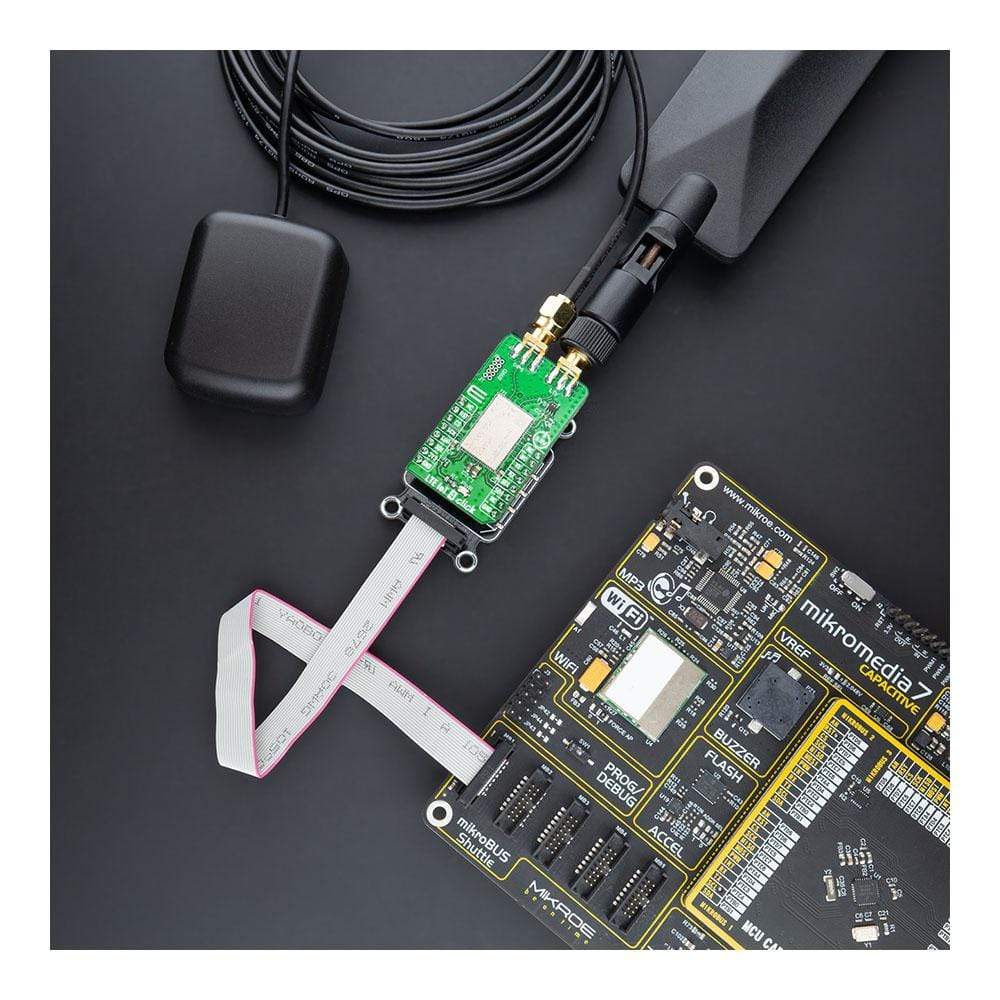
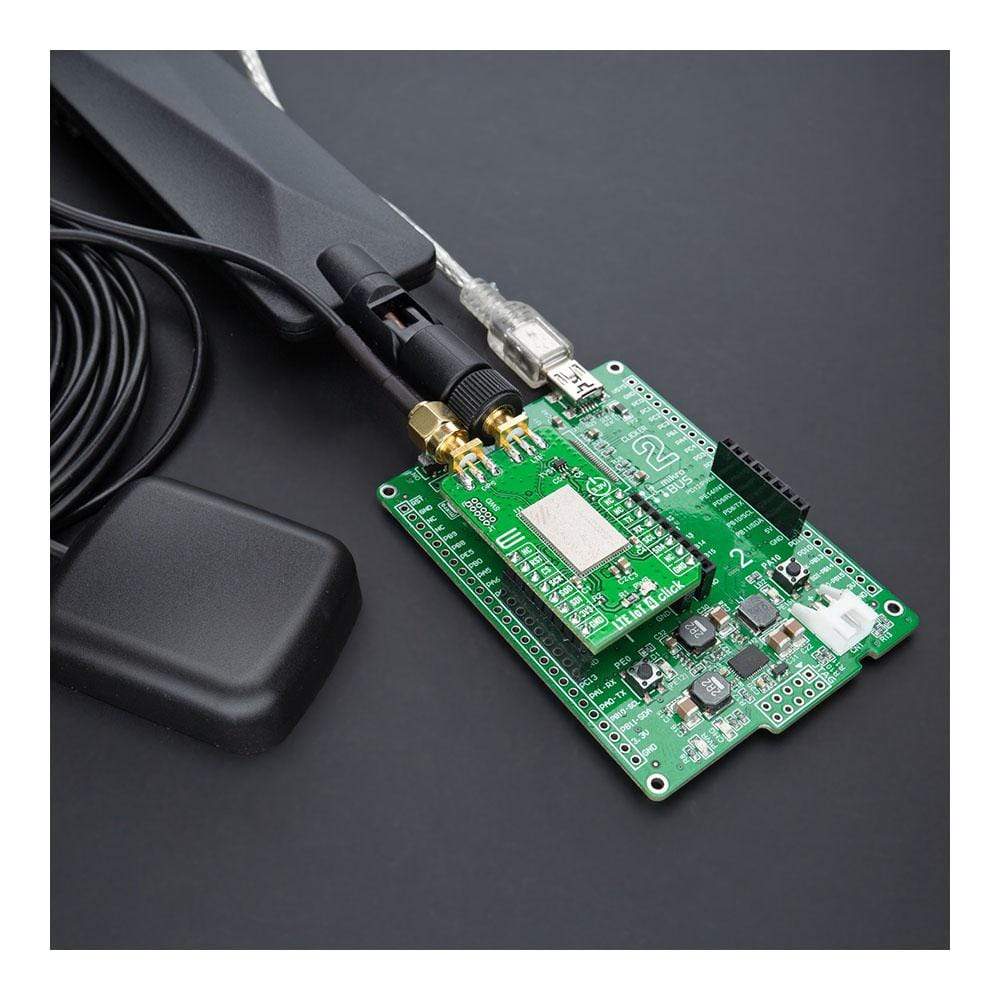
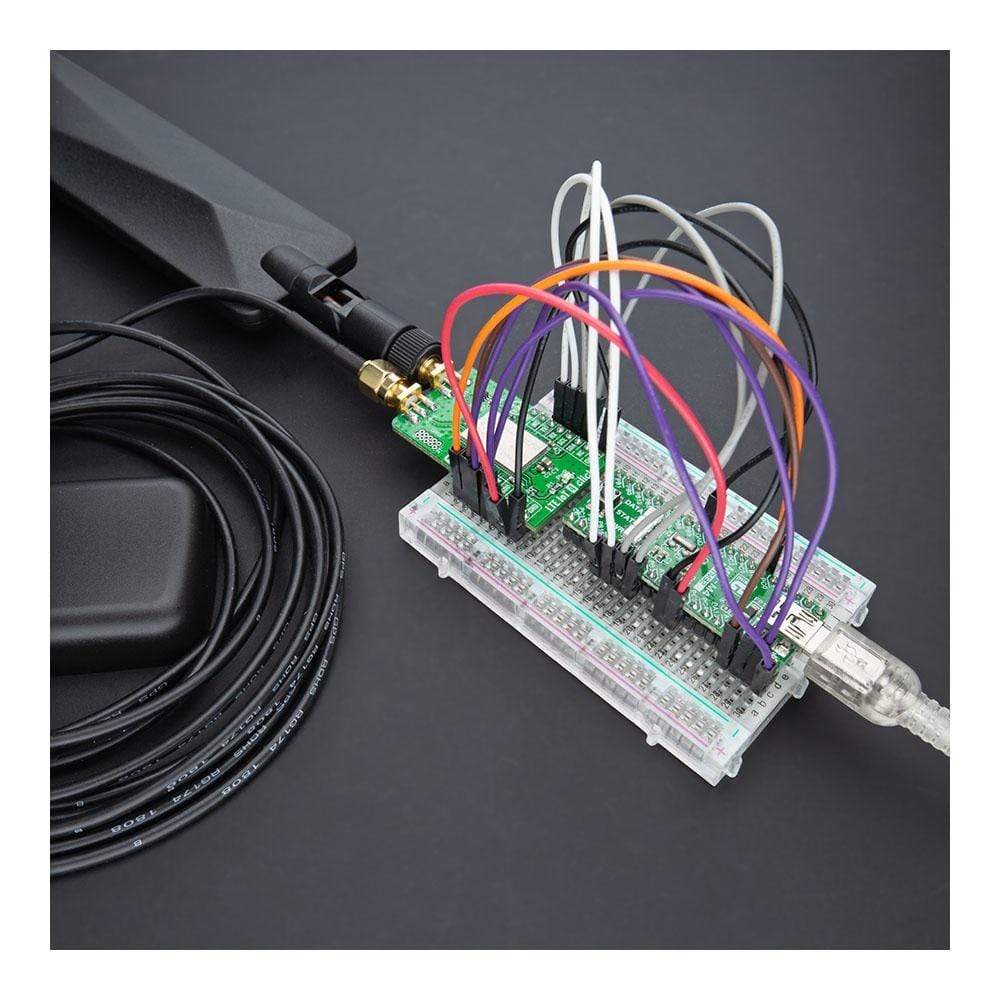
Overview
The LTE IoT 4 Click Board™ is a compact add-on board that contains an IoT module with worldwide coverage. This board features the nRF9160, highly integrated, low-power SiP with LTE-M/NB-IoT and GPS from Nordic Semiconductor. The nRF9160 has an integrated ARM® Cortex®-M33 processor supported by 1MB of Flash and 256KB RAM with advanced security features. It can operate globally, eliminating any need for regional variants, and supports SIM connection and authentication with mobile network operators. This Click Board™ is suitable for logistics and asset tracking, predictive maintenance, industrial, smart agriculture, and many more applications.
The LTE IoT 4 Click Board™ is supported by a mikroSDK compliant library, which includes functions that simplify software development. This Click Board™ comes as a thoroughly tested product, ready to be used on a system equipped with the mikroBUS™ socket.
Downloads
Le LTE IoT 4 Click Board™ est une carte complémentaire compacte qui contient un module IoT avec une couverture mondiale. Cette carte est équipée du nRF9160, un SiP à faible consommation hautement intégré avec LTE-M/NB-IoT et GPS de Nordic Semiconductor. Le nRF9160 dispose d'un processeur ARM® Cortex®-M33 intégré pris en charge par 1 Mo de Flash et 256 Ko de RAM avec des fonctionnalités de sécurité avancées. Il peut fonctionner à l'échelle mondiale, éliminant ainsi tout besoin de variantes régionales, et prend en charge la connexion SIM et l'authentification auprès des opérateurs de réseaux mobiles. Ce Click Board™ convient à la logistique et au suivi des actifs, à la maintenance prédictive, à l'industrie, à l'agriculture intelligente et à de nombreuses autres applications.
Le LTE IoT 4 Click Board™ est pris en charge par une bibliothèque compatible mikroSDK, qui comprend des fonctions qui simplifient le développement logiciel. Cette Click Board™ est un produit entièrement testé, prêt à être utilisé sur un système équipé du socket mikroBUS™.
| General Information | |
|---|---|
Part Number (SKU) |
MIKROE-4477
|
Manufacturer |
|
| Physical and Mechanical | |
Weight |
0.022 kg
|
| Other | |
Country of Origin |
|
HS Code Customs Tariff code
|
|
EAN |
8606027381799
|
Warranty |
|
Frequently Asked Questions
Have a Question?
Be the first to ask a question about this.

